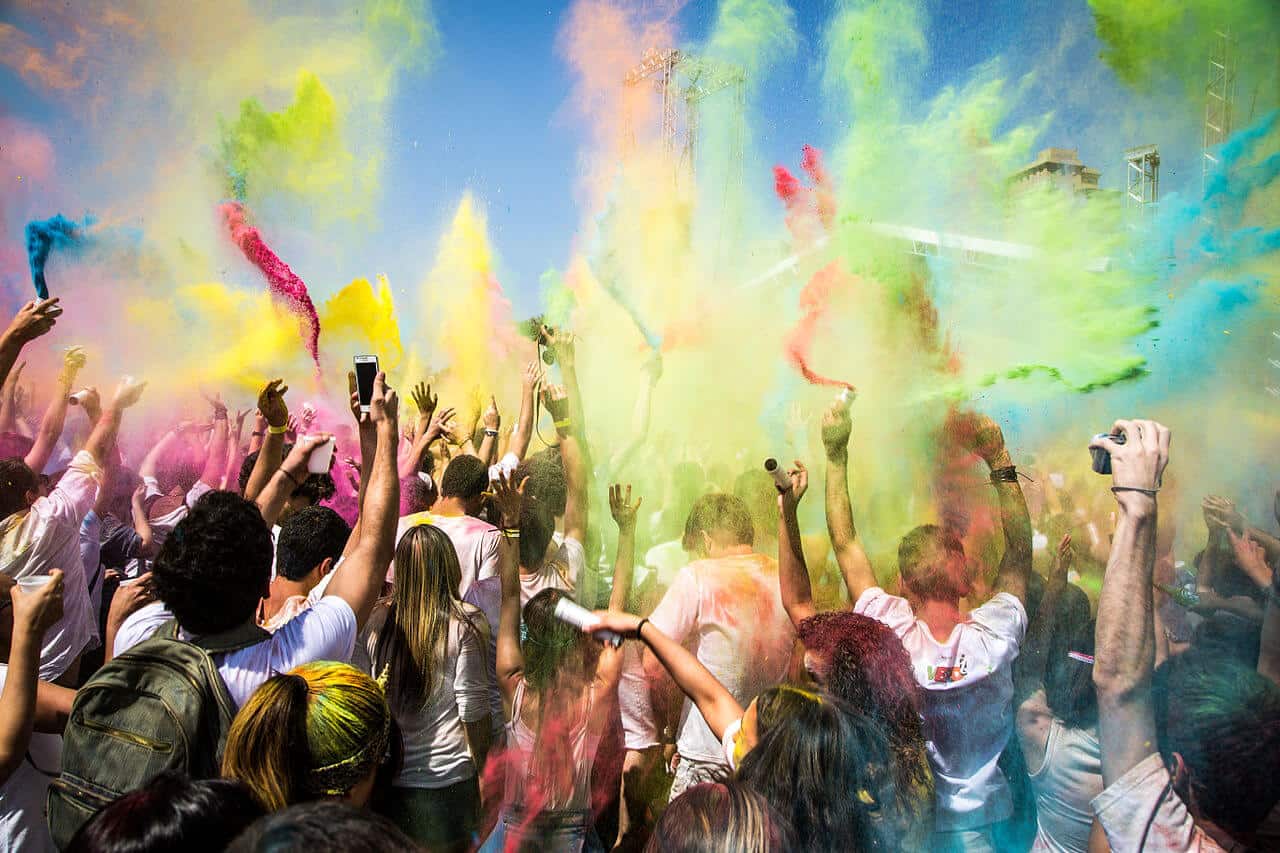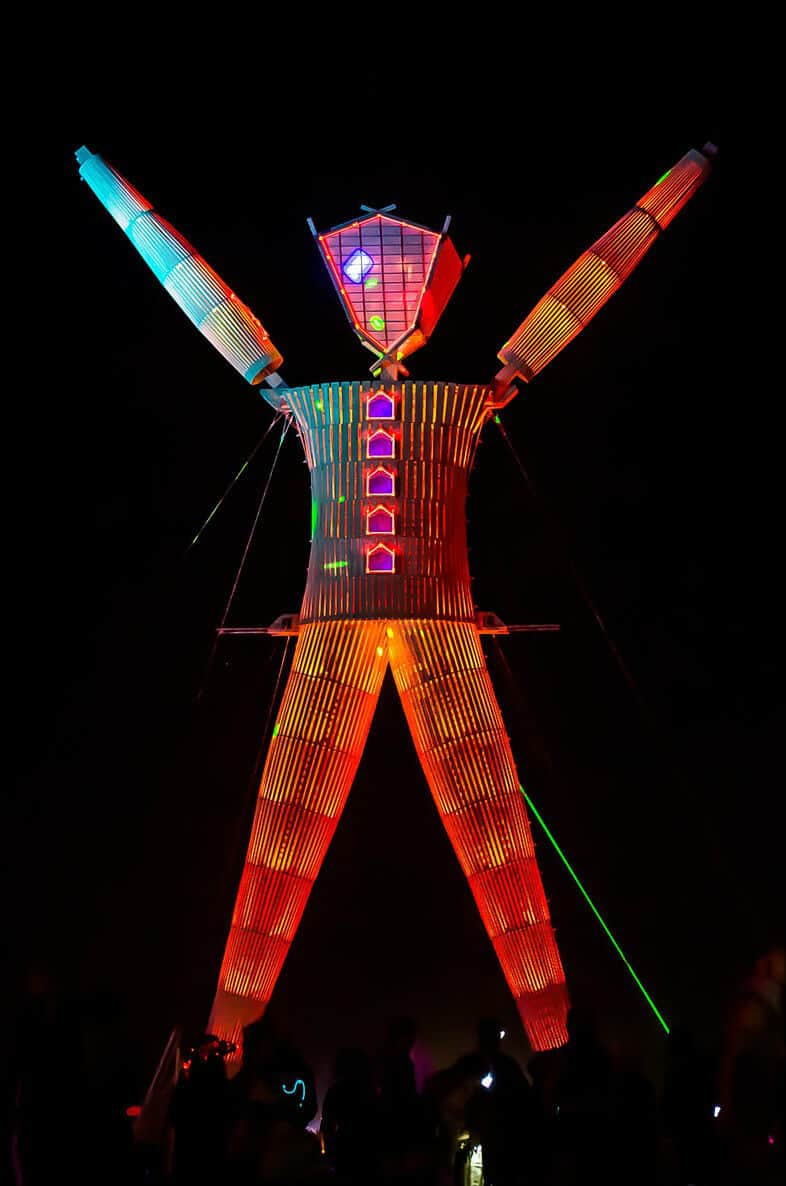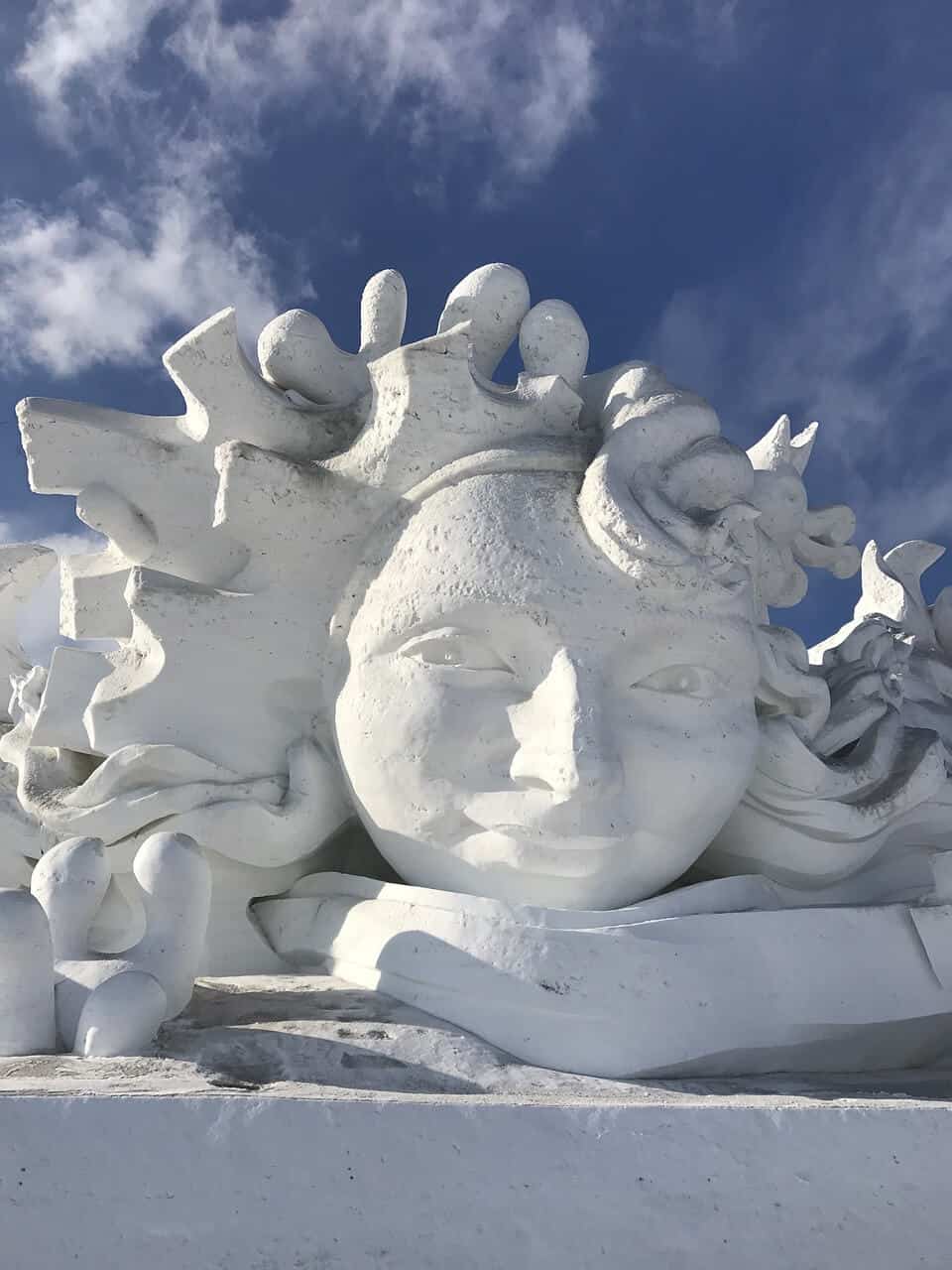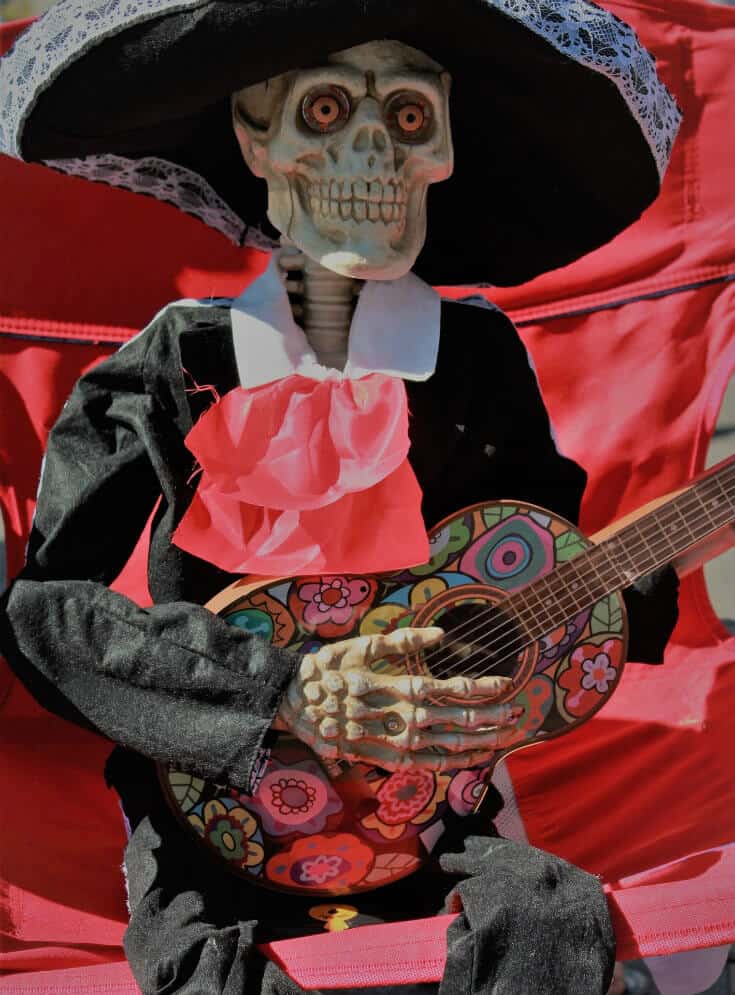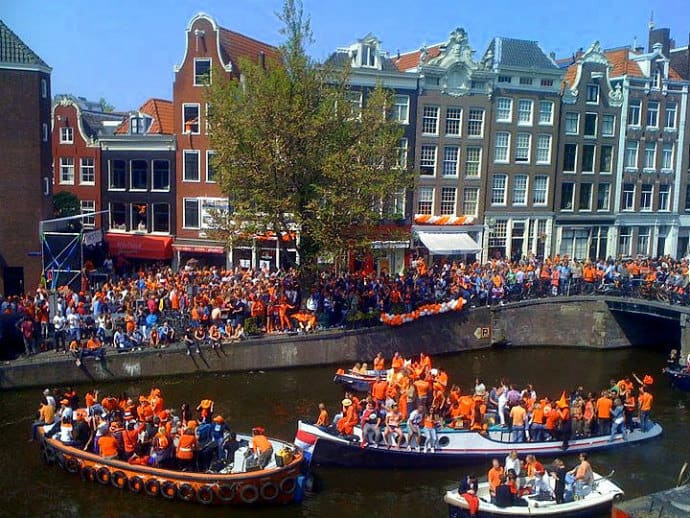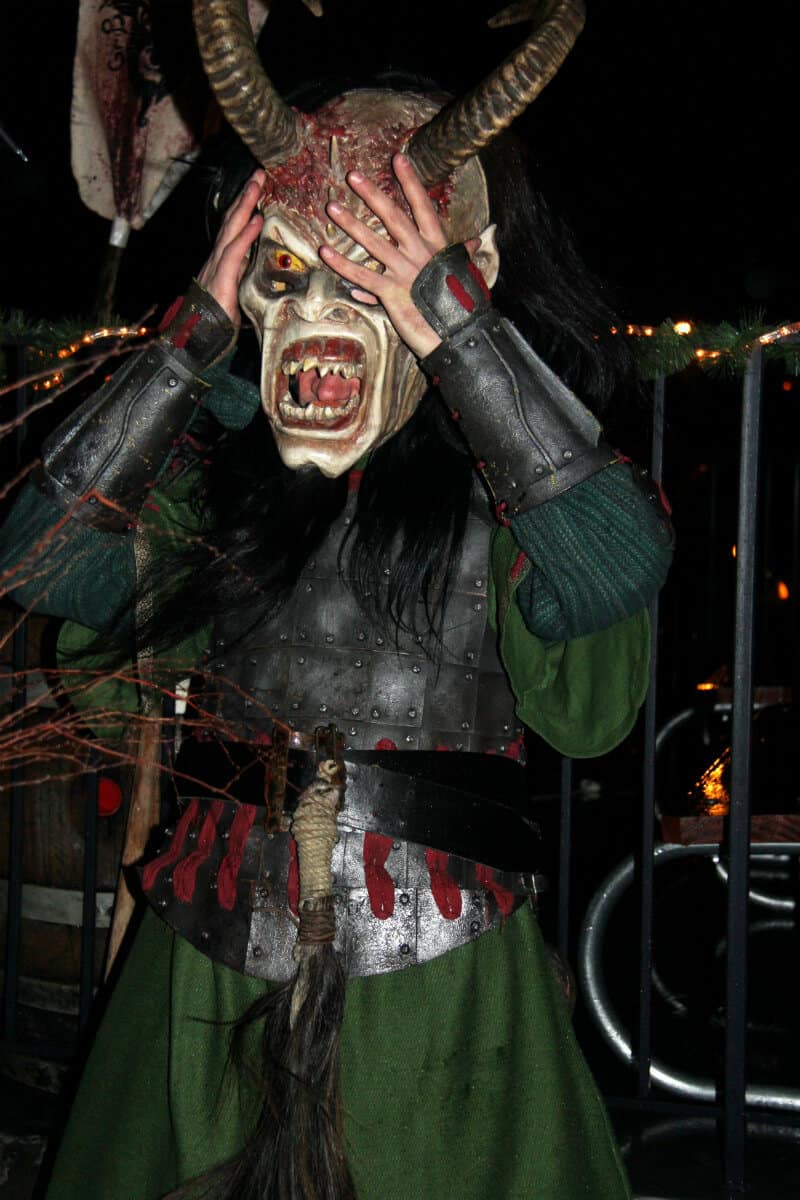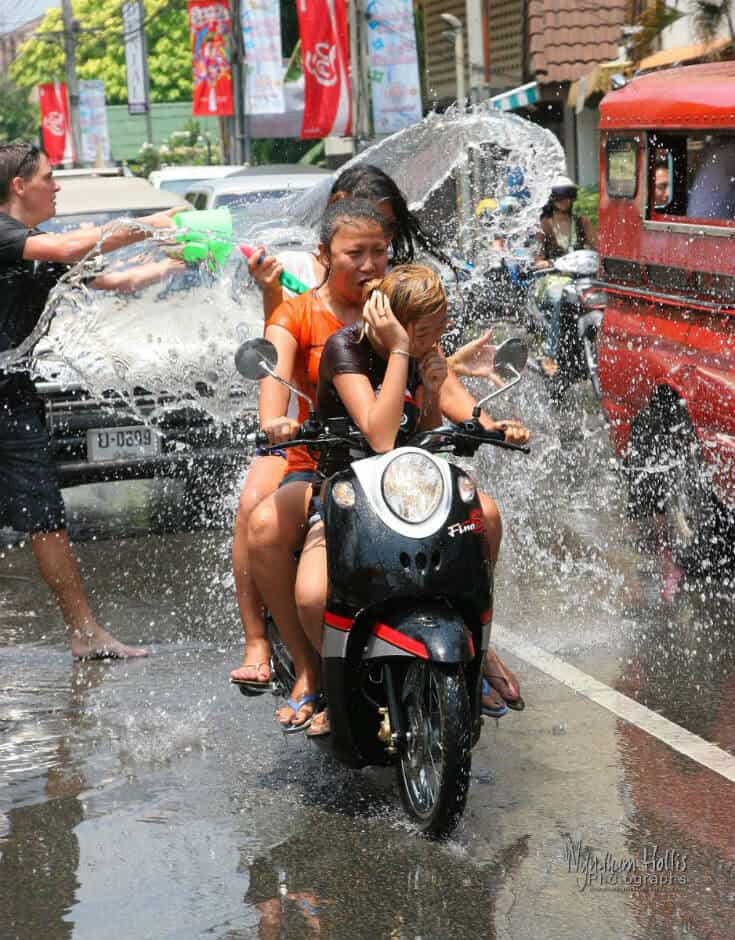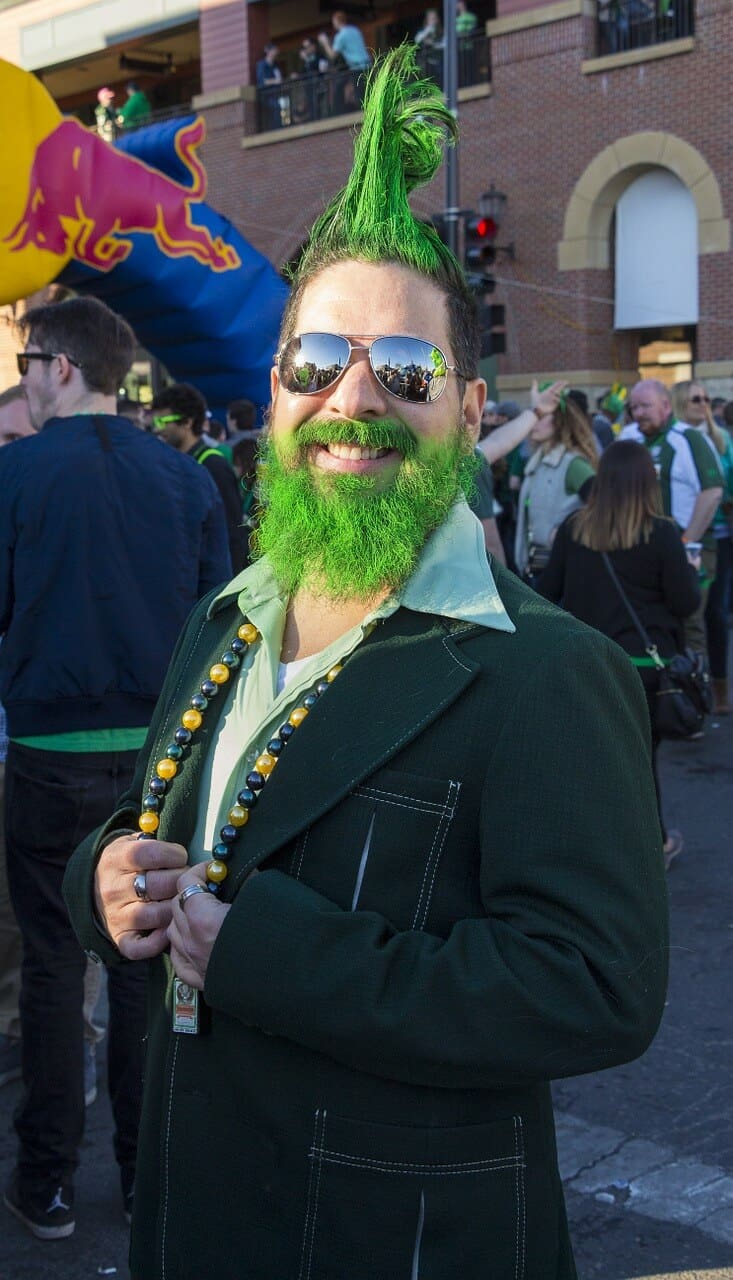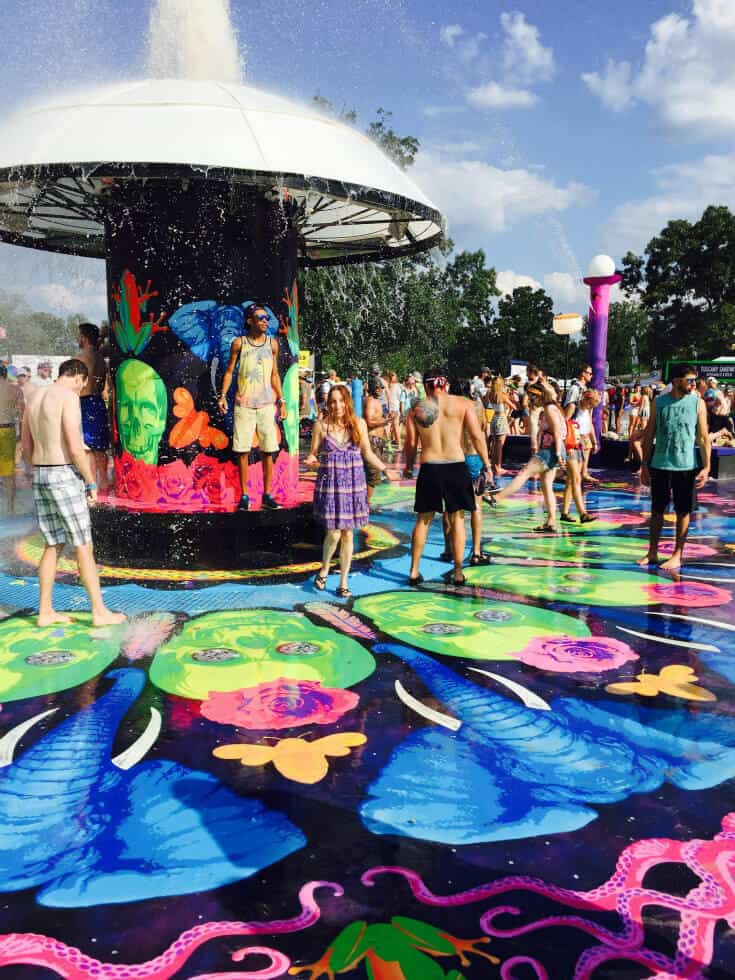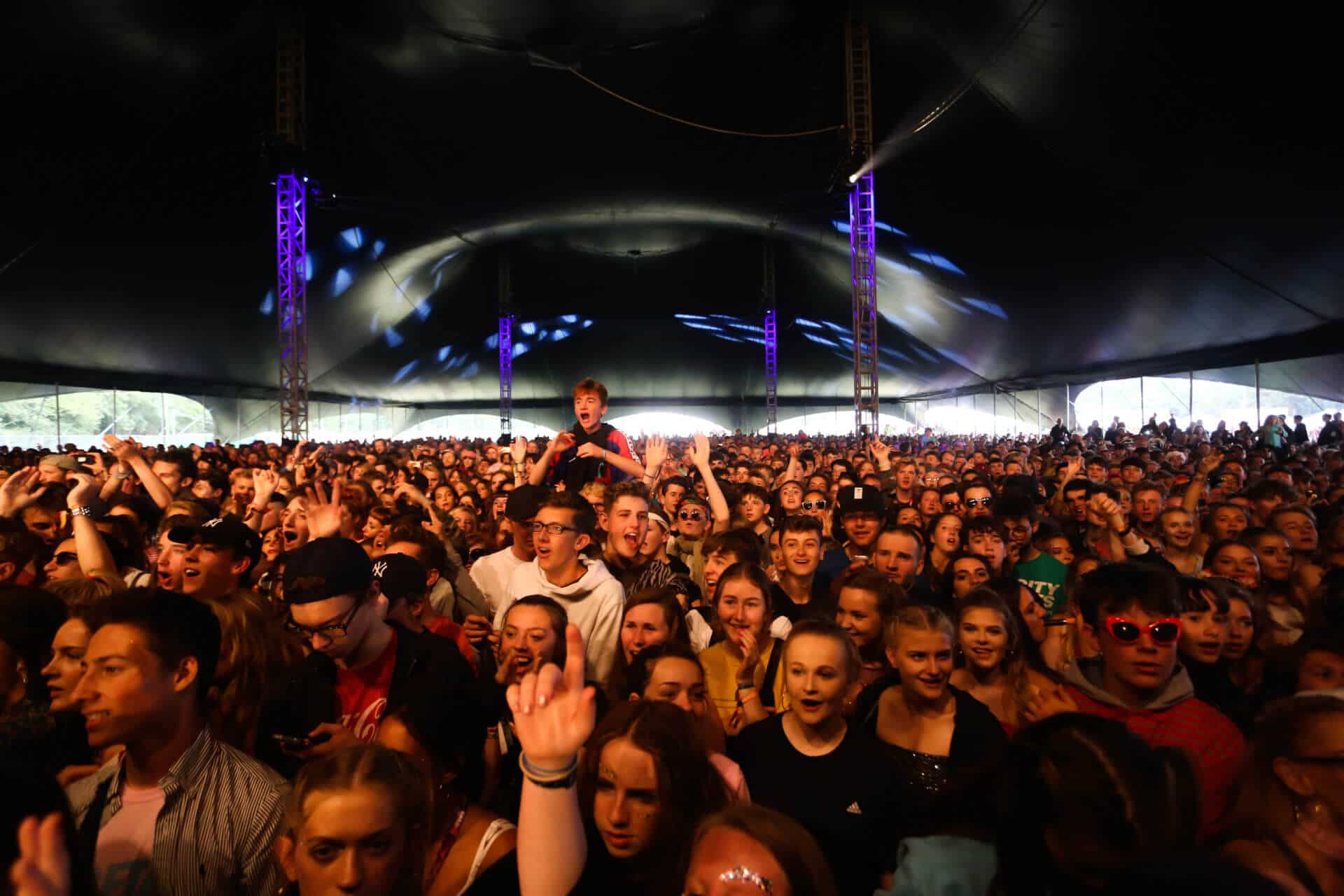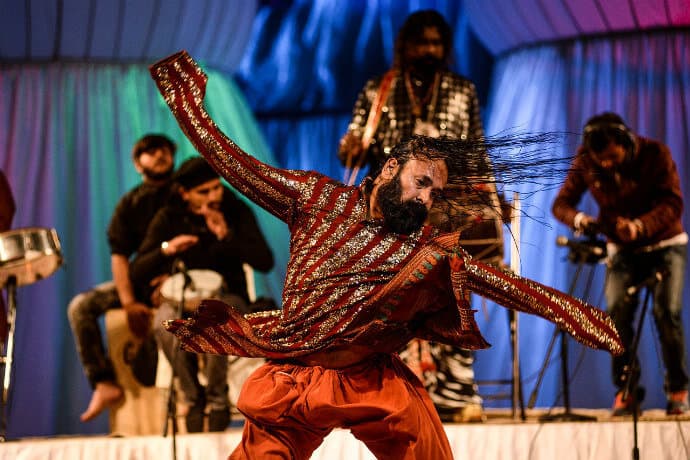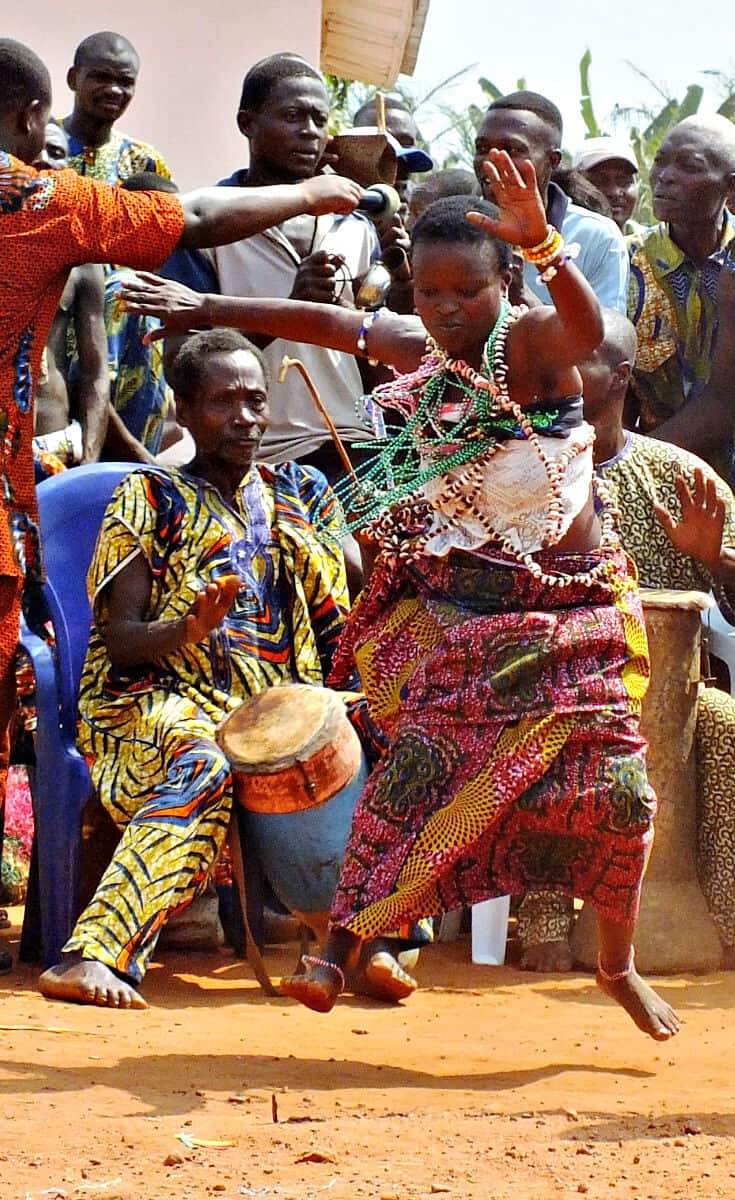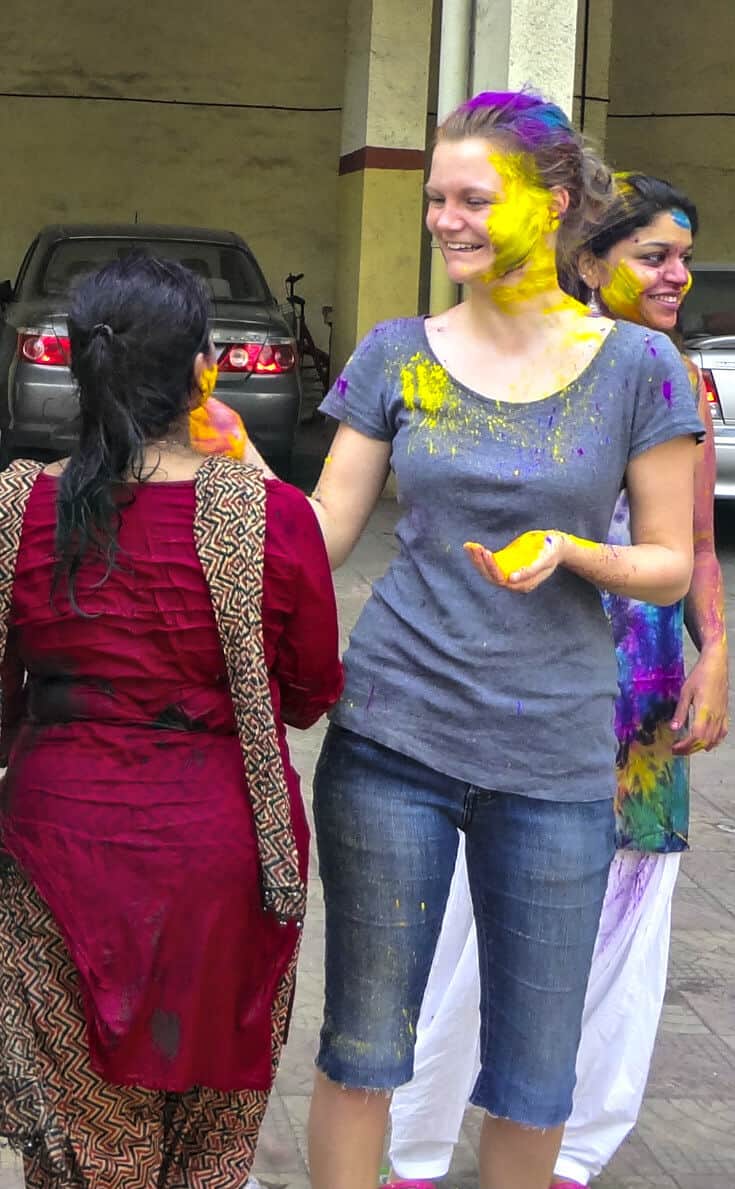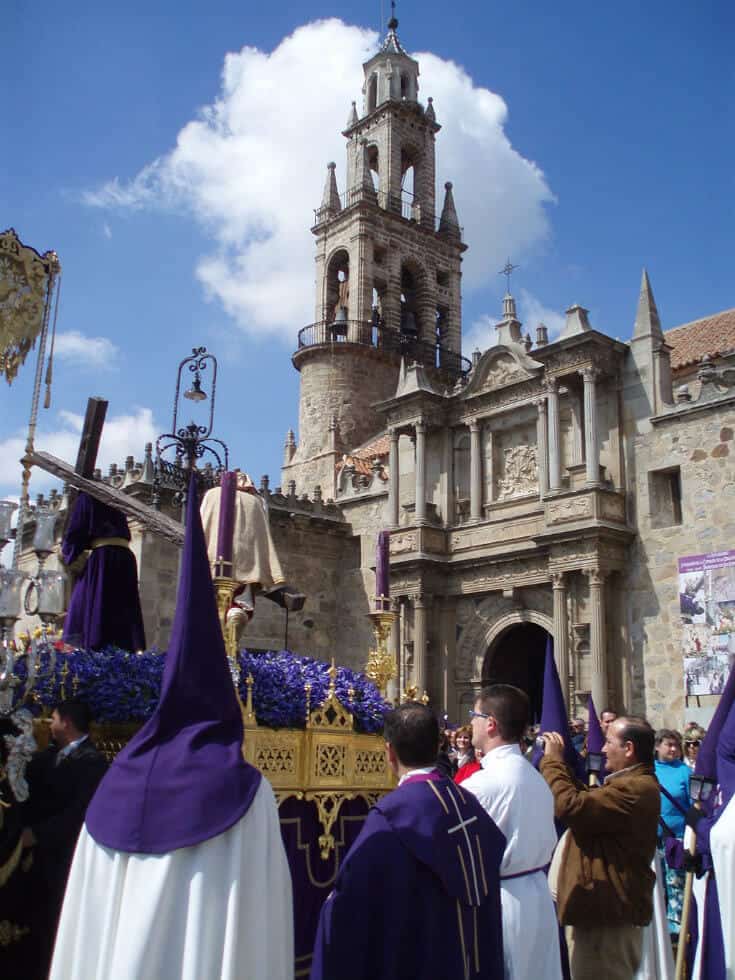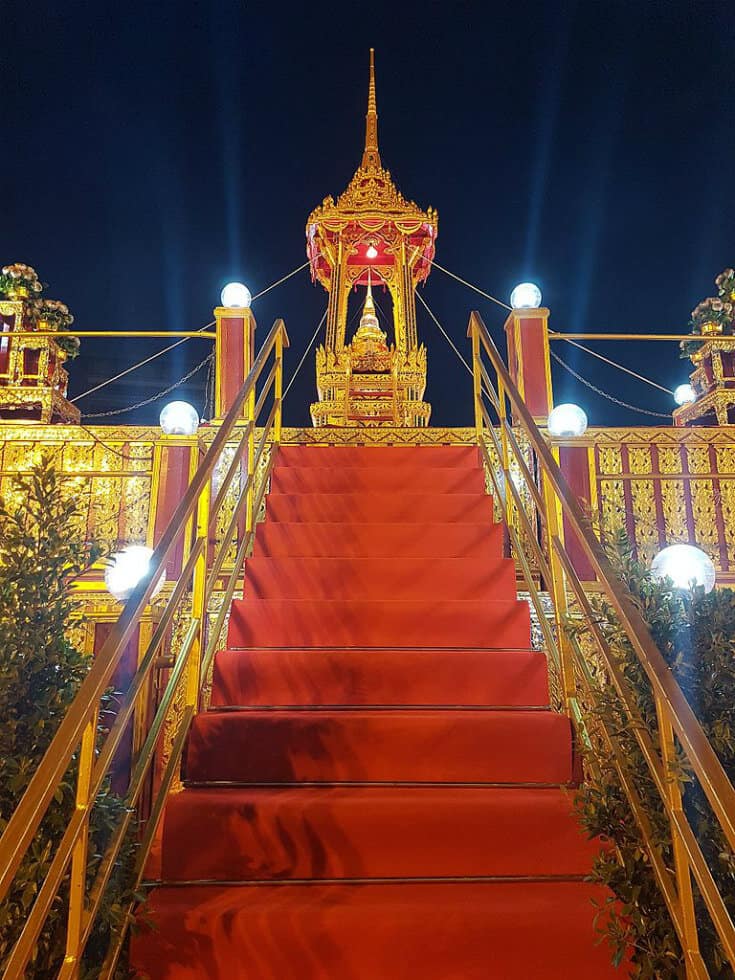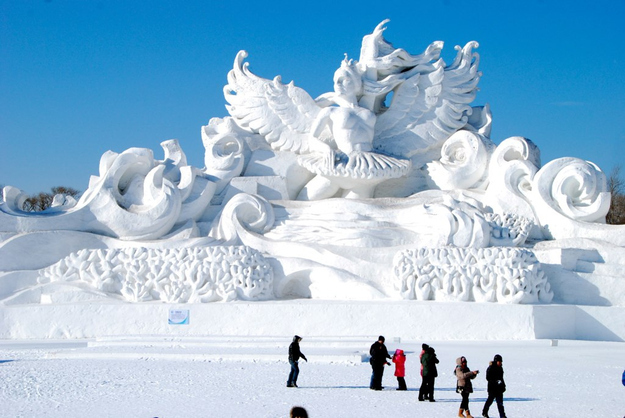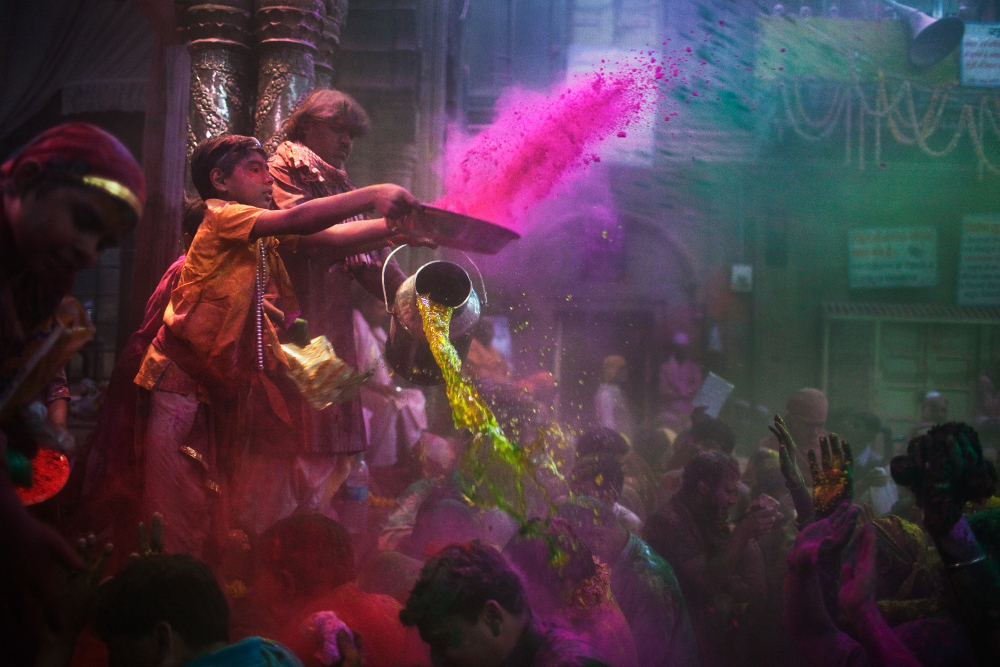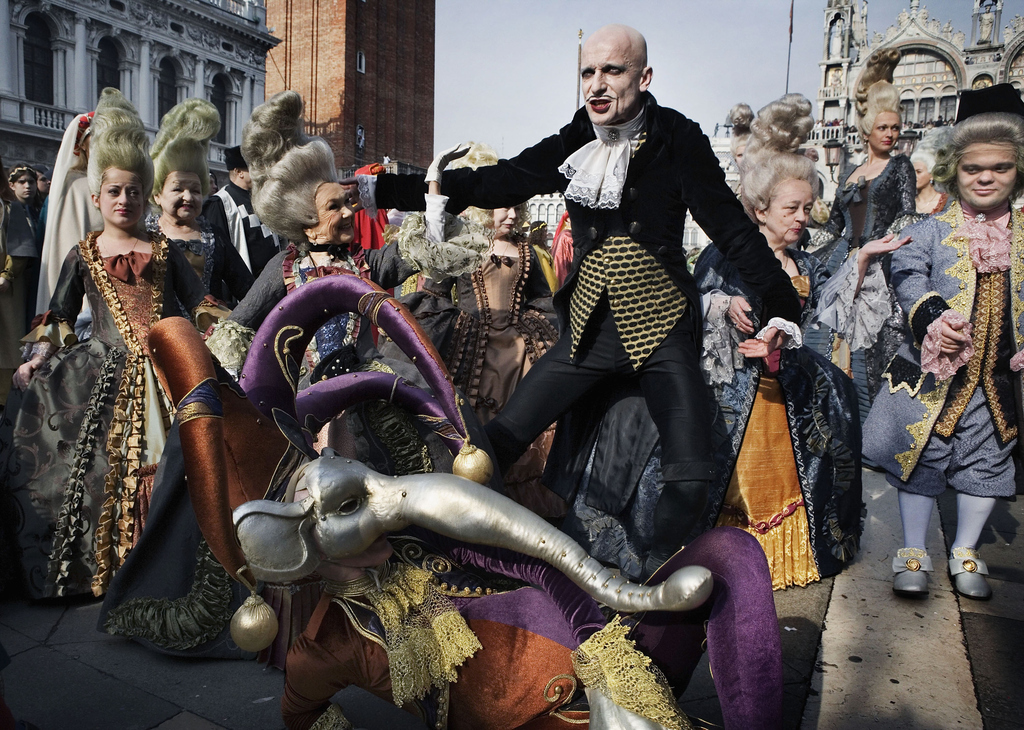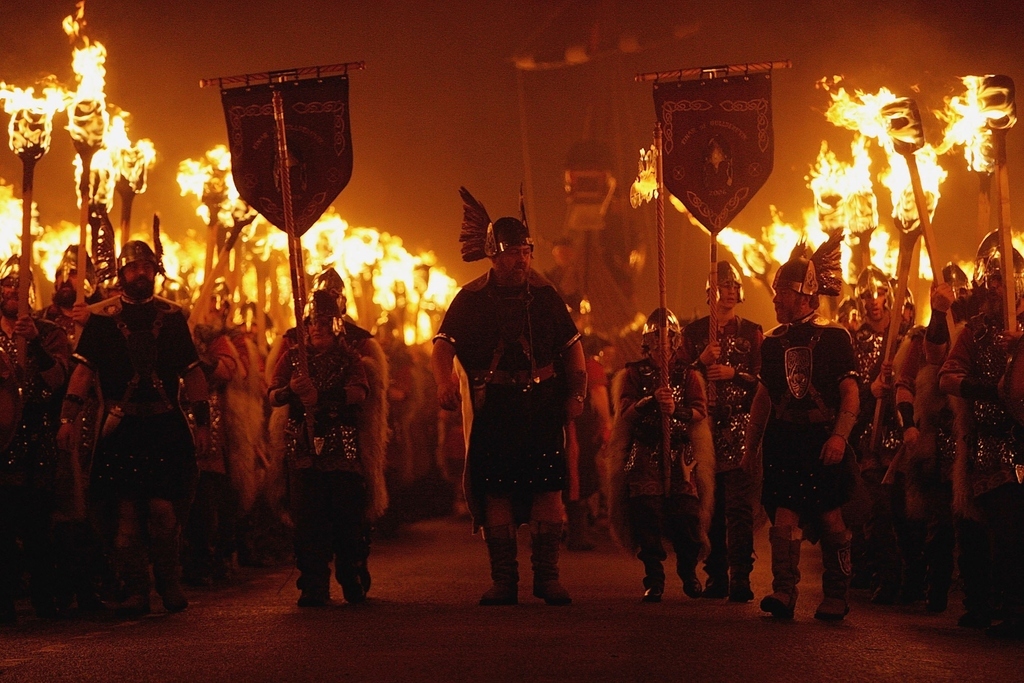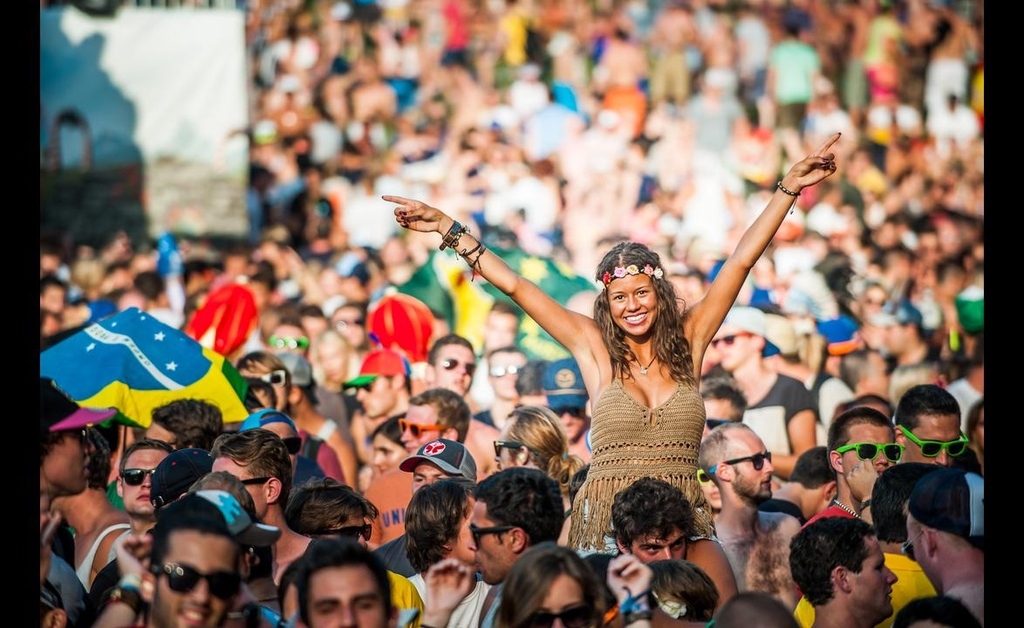
Greece one of oldest city in Europe known for its plethora of ancient ruins, whitewashed villages, beaches, tasty cuisine and friendly atmosphere, it is no wonder that Greece ranks among Europe’s top travel destinations. Greece is made up of a mountainous mainland and hundreds of islands where each one offers its own share of stunning landscapes, historic sites, nightlife scenes and cultural delights.

If you are a first-time visitor to Greece you want to know what not to miss. There are many different places that get all of the attention as tourist destinations, but let’s take a look and see what places in Greece you must check out on your first visit to get the best variety of what this diverse country has to offer!
Athens:
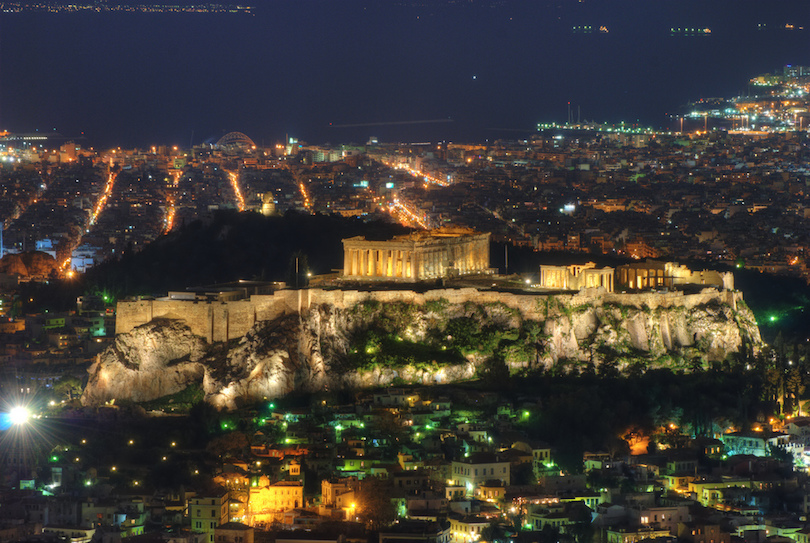
flickr/hermenpaca
More than 2,000+ years, Athens is widely known as the cradle of Western civilization and the birthplace of democracy. The city presents a confusing blend of historical and modern features. Athens is famous for its archaeological ruins and monuments such as the famous Acropolis, the Parthenon, the Ancient Agora and the Theatre of Dionysos just to name a few. However, Athens is not just about ancient ruins. This bustling city is also an important center for business, culture and nightlife.
 When in Greece you must see the Acropolis and visit the Acropolis museum — it is an amazing and unforgettable experience. Also, there are many other things that you might want to check out while in Athens.
When in Greece you must see the Acropolis and visit the Acropolis museum — it is an amazing and unforgettable experience. Also, there are many other things that you might want to check out while in Athens.

 When in Greece you must see the Acropolis and visit the Acropolis museum — it is an amazing and unforgettable experience. Also, there are many other things that you might want to check out while in Athens.
When in Greece you must see the Acropolis and visit the Acropolis museum — it is an amazing and unforgettable experience. Also, there are many other things that you might want to check out while in Athens.
You can spend the day in roaming the ancient streets of Monastiraki or divert from the main tourist attractions and check out the town of Anafiotika nestled under the Acropolis that transports you to a Mediterranean island!

Or you can take a bus to visit the near by ruins of Sunio. Instead of going to the traditional beaches around Athens you can always take a taxi or bus to check out the unique cave lake of Lake of Vouliagmeni, located in Vouliagmeni.
Greek Islands: Cyclades group
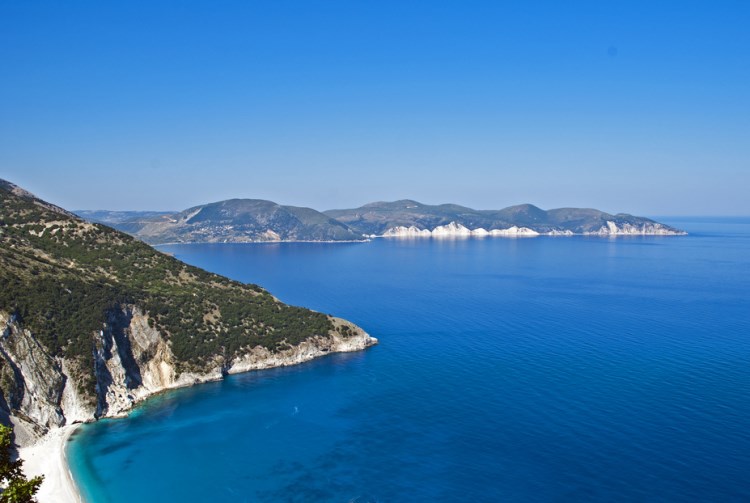
Part of the Cyclades group, Santorini is among the most picturesque islands and definitely one of the best places to visit in Greece. Also part of the Cyclades, Mykonos features a modern, cosmopolitan society blended with traditional whitewashed houses and maze-like streets. Located in the Aegean Sea near the coast of Turkey, Rhodes is the capital and largest island of the Dodecanese archipelago, popular for its great beaches and historical significance. The northernmost of Greece’s Ionian Islands, Corfu was controlled by many foreign powers, notably the Venetians and British, which is reflected in its culture and the architecture on the island.
Crete: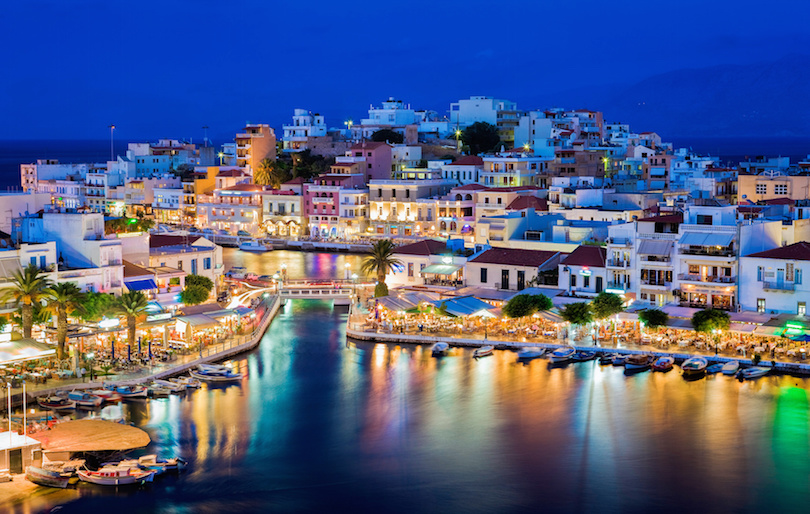

The largest of the Greek islands, Crete is a spacious land of pleasing contrasts where landscapes range from stunning coastline to rugged mountains and rolling countryside dotted with olive trees. Bustling metropolitan cities spread beyond to quiet villages centered around outdoor coffee shops. Steeped in history, Crete still bears archaeological traces of the many civilizations that inhabited it down through the centuries.
Meteor: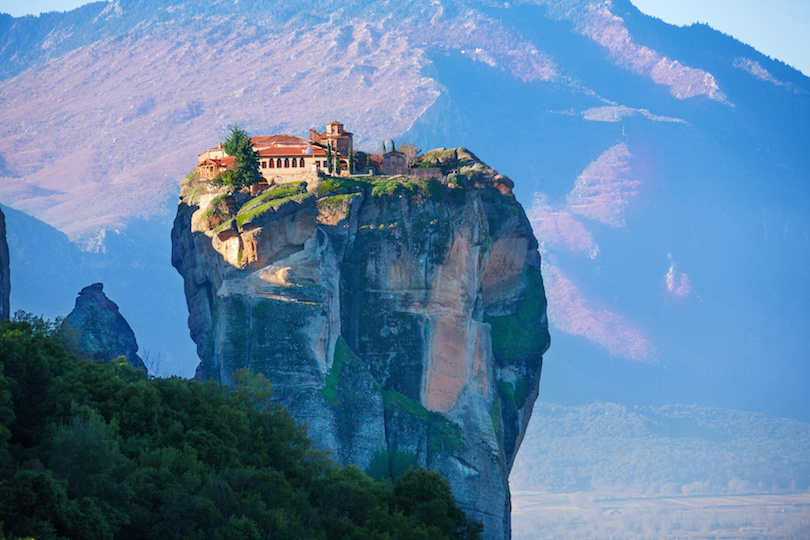

The Greek word meteora means “suspended in the air,” and this phrase aptly describes the spectacular cliffs that rise more than 1,200 feet (366 meters) into the air overlooking the villages of Kalambaka and Kastraki in the north central mainland of Greece. What makes these cliffs even more inspiring are the historic monasteries perched along the summits. Dating back to the 14th and 16th centuries, the monasteries at Meteora were built by monks seeking spiritual isolation and freedom from religious persecution.
Delphi: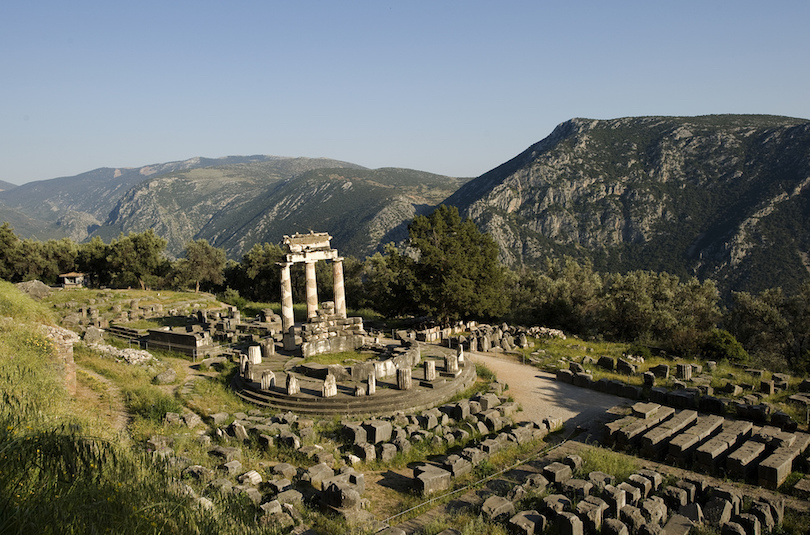

flickr/thebaldwin
Second to the Acropolis in Athens, Delphi is Greece’s most popular archaeological site. Located about two and half hours from Athens along the slopes of the awe-inspiring Mount Parnassus, Delphi was once revered by the ancient Greeks as the center of the earth. Dedicated to the god, Apollo, Delphi was an important oracle. In ancient times, people would come to this sacred spot to inquire of the priestess for advice on a wide range of topics from farming to relationships and politics. Significant ruins and structures at Delphi include the Temple of Apollo, the Athenian Treasury, the theater and hippodrome that once hosted events of the ancient Pythian Games.
Peloponnese: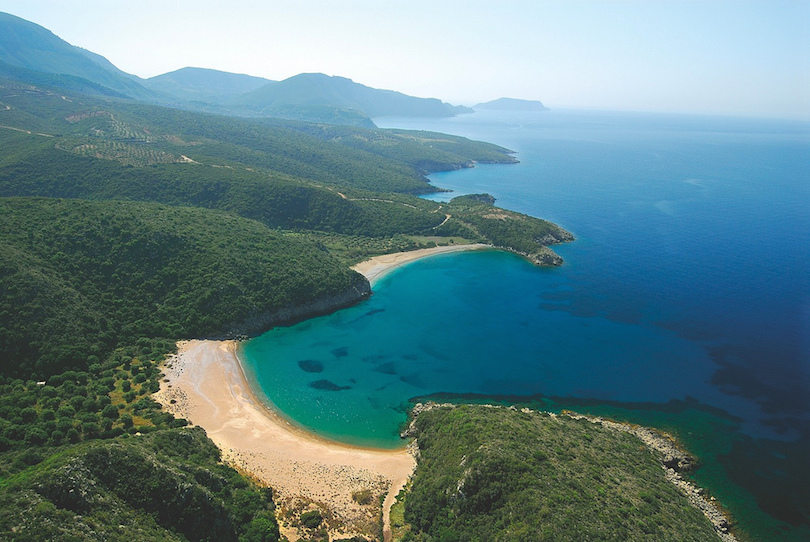

flickr/Visit Greece
Shaped much like a large leaf, Peloponnese was traditionally called Morea, which means mulberry leaf. Located in the southernmost region of both Europe and Greece, Peloponnese is a wide peninsula connected to the mainland by the Rio-Antirrio bridge. Interspersed with classical Greek temples, Venetian fortresses, Byzantine churches and Mycenaean palaces, Peloponnese echoes the ancient cultures and events from its extensive history. Among these ancient ruins is Olympia, where the first Olympic Games were hosted in honor of Zeus.
Halkidiki: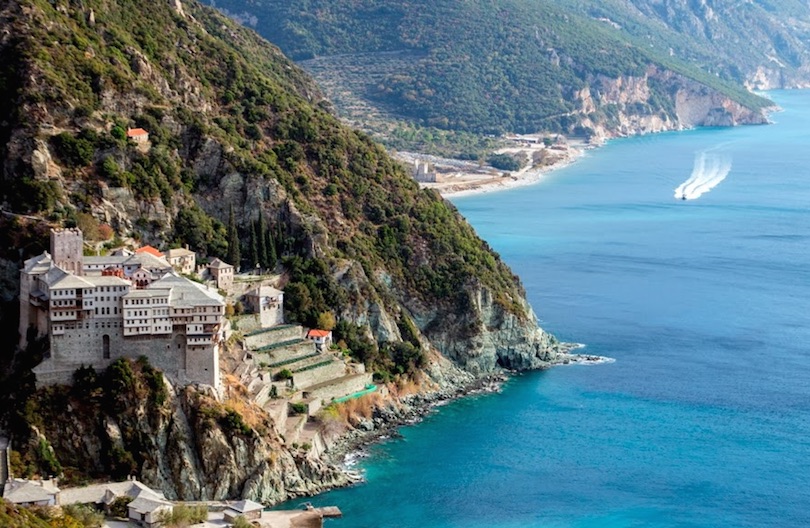

flickr/someone10x
Halkidiki is a trident-like peninsula near the city of Thessaloniki, sporting excellent beaches. The three separate peninsulas can be roughly summarized as follows: Kassandra has the nightlife, Sithonia has the beaches and Athos has the monks. Being closest to Thessaloniki, Kassandra is more built-up, while the more quiet Sithonia has campgrounds, hidden coves and clear waters. Both are popular with Greek and Eastern European tourists. Much of the easternmost peninsula belongs to the Mount Athos monastic community. It’s accessible by boat and open to male pilgrims only.
Zagori:

wikipedia/Nikos A. Kanellopoulos
Zagori is a region of great natural beauty, with striking geology and two national parks, in northwestern Greece. It’s dense forests and rugged mountains are furrowed by powerful rivers and dotted with traditional villages, many featuring grand stone houses dating from the late eighteenth century. The best way to enjoy the area is by hiking the numerous paths connecting the villages. The most accessible and rewarding target is the wonderful Víkos Gorge.
Thessaloniki: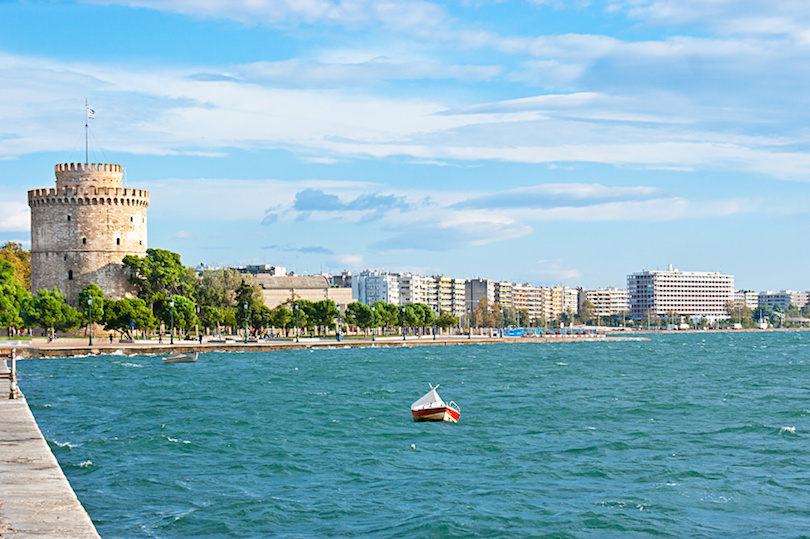

Thessaloniki is Greece’s second-largest city and the capital city of the Macedonian region of Northern Greece. Lively festivals, social events and a buzzing nightlife make this city the cultural capital of Greece. Comprised of a historic city center and commercial district, Thessaloniki offers both old and new attractions from its Byzantine walls, White Tower and Turkish baths to colorful food markets, museums and art galleries. Thessaloniki’s nightlife is unmatched. From small tavernas to nightclubs and other entertainment venues, Thessaloniki offers it all.
Cape Sounion: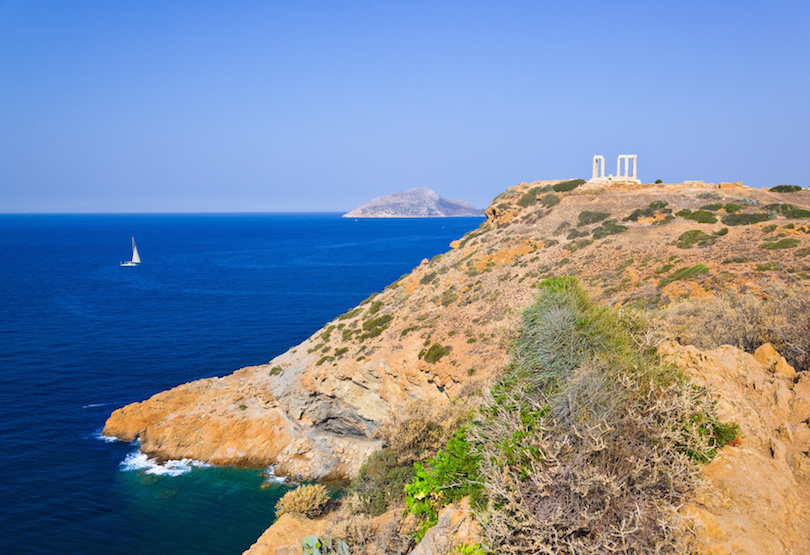

Situated at the southernmost tip of the Attica peninsula, Cape Sounion is best known as the site of the ruins of the ancient Greek temple of Poseidon, the god of the sea. The remains are perched on the headland, surrounded on three sides by the sea. The site is a popular day-excursion for tourists from Athens, with sunset over the Aegean Sea, as viewed from the ruins, a sought-after spectacle.
 Looking for something different you can try on your vacation? For those looking for an alternative view of the island, you can see the island on horseback! Check out Harriet’s Hydra Horses where tours are offered for 1-5 people, however, if pre-arranged 6-100 people are welcomed to a group tour.
Looking for something different you can try on your vacation? For those looking for an alternative view of the island, you can see the island on horseback! Check out Harriet’s Hydra Horses where tours are offered for 1-5 people, however, if pre-arranged 6-100 people are welcomed to a group tour.
 Why Rhodes? Yes, this island is a big tourist destination — but for all of the right reasons! You can spend your time seeing the ancient ruins such as the Acropolis of Lindos which is your reward after completing a climb of the steep footpath reaching 116 meters-high rock above Lindos to reach this beautifully preserved Acropolis!
Why Rhodes? Yes, this island is a big tourist destination — but for all of the right reasons! You can spend your time seeing the ancient ruins such as the Acropolis of Lindos which is your reward after completing a climb of the steep footpath reaching 116 meters-high rock above Lindos to reach this beautifully preserved Acropolis!
 Or if you want something different to do check out Petaloudes — the Valley of the Butterflies!
Or if you want something different to do check out Petaloudes — the Valley of the Butterflies!
 Crete is a great place to see if you are able to fit it into your itinerary. Every year people visiting Greece come to Crete to visit the ruins of the ancient city of Knossos to experience what remains from the capital of Minoan Civilization.
Crete is a great place to see if you are able to fit it into your itinerary. Every year people visiting Greece come to Crete to visit the ruins of the ancient city of Knossos to experience what remains from the capital of Minoan Civilization.
 Also, as the largest island in Greece, Crete has a coastline of 1,046 km or 650 miles — which makes for some extraordinary beaches. With crystal clear waters and sand in a variety of colors, Crete’s beaches are unforgettable – in fact, this year of the 486 Blue Flag awarded beaches in Greece, 112 of the eco-labeled beaches are located on Crete!
Also, as the largest island in Greece, Crete has a coastline of 1,046 km or 650 miles — which makes for some extraordinary beaches. With crystal clear waters and sand in a variety of colors, Crete’s beaches are unforgettable – in fact, this year of the 486 Blue Flag awarded beaches in Greece, 112 of the eco-labeled beaches are located on Crete!
 Besides seeing Kérkyra old town, be sure to try some the favorite local dish which is unique to Corfu called “sofrito.” Corfu has many Italian influences because of its proximity to Italy, which you will see right away once you visit this island and foodies go wild for the island’s classic combination of beef cooked in a local white wine sauce, with garlic and fresh parsley!
Besides seeing Kérkyra old town, be sure to try some the favorite local dish which is unique to Corfu called “sofrito.” Corfu has many Italian influences because of its proximity to Italy, which you will see right away once you visit this island and foodies go wild for the island’s classic combination of beef cooked in a local white wine sauce, with garlic and fresh parsley!
 While on Corfu, don’t miss out on a unique opportunity to visit Paleá Períthia, the Venetian-era village hidden in the north slope of island summit Mt Pandokrátor to be transported back into time! The village was abandoned after the 1960’s and has undergone many restoration projects since then — including the restoration of the 14th-century church of Agios Iákovos O Pérsis which you see as you approach the village.
While on Corfu, don’t miss out on a unique opportunity to visit Paleá Períthia, the Venetian-era village hidden in the north slope of island summit Mt Pandokrátor to be transported back into time! The village was abandoned after the 1960’s and has undergone many restoration projects since then — including the restoration of the 14th-century church of Agios Iákovos O Pérsis which you see as you approach the village.
 Want to get to see the island from a different perspective? Why not rent a scooter while there — if you feel confident in your scooter-driving skills, that is, since the roads are steep and narrow. There are plenty of rental companies that can provide you with a scooter from different towns on the island, as well as many located in Karterados, which is 1 kilometer from Fira.
Want to get to see the island from a different perspective? Why not rent a scooter while there — if you feel confident in your scooter-driving skills, that is, since the roads are steep and narrow. There are plenty of rental companies that can provide you with a scooter from different towns on the island, as well as many located in Karterados, which is 1 kilometer from Fira.
 You will probably want to check out the commonly visited tourists attractions such as the beaches of Kamari and Persia, and for a treat check out experiencing the true culture and uniqueness of the island by staying in places such as Fira, Imerovigli or Oia. These towns are built into the cliffs, which are very beautiful and full of little cafes, shops and places of interest. Exploring this island by bike is amazing and the possibilities are limitless!
You will probably want to check out the commonly visited tourists attractions such as the beaches of Kamari and Persia, and for a treat check out experiencing the true culture and uniqueness of the island by staying in places such as Fira, Imerovigli or Oia. These towns are built into the cliffs, which are very beautiful and full of little cafes, shops and places of interest. Exploring this island by bike is amazing and the possibilities are limitless!
 Experiencing Greece for the first time should be a bit like a sample pallet of all that the mainland and islands have to offer. The island of Milos is unique and memorable and you’ll get some fantastic photos to wow your friends and family with when you get home — especially from the moonscaped beaches!
Experiencing Greece for the first time should be a bit like a sample pallet of all that the mainland and islands have to offer. The island of Milos is unique and memorable and you’ll get some fantastic photos to wow your friends and family with when you get home — especially from the moonscaped beaches!
Hydra


One island that is not only unique but also conveniently located close to Athens in Hydra. Hydra is an enchanting Greek island known for its restaurants lining the main port and the inevitable flashback to the turn of the century and beyond as there are no cars allowed on the island. The charm of the winding narrow pathways that lace the city are one way to experience Hydra.
 Looking for something different you can try on your vacation? For those looking for an alternative view of the island, you can see the island on horseback! Check out Harriet’s Hydra Horses where tours are offered for 1-5 people, however, if pre-arranged 6-100 people are welcomed to a group tour.
Looking for something different you can try on your vacation? For those looking for an alternative view of the island, you can see the island on horseback! Check out Harriet’s Hydra Horses where tours are offered for 1-5 people, however, if pre-arranged 6-100 people are welcomed to a group tour.
Rhodes:
 Rhodes is a breathtaking island with stand-out fortifications of the town of Rhodes winding around the medieval town. It has quaint little squares and tavernas throughout its villages.
Rhodes is a breathtaking island with stand-out fortifications of the town of Rhodes winding around the medieval town. It has quaint little squares and tavernas throughout its villages.
 Rhodes is a breathtaking island with stand-out fortifications of the town of Rhodes winding around the medieval town. It has quaint little squares and tavernas throughout its villages.
Rhodes is a breathtaking island with stand-out fortifications of the town of Rhodes winding around the medieval town. It has quaint little squares and tavernas throughout its villages. Why Rhodes? Yes, this island is a big tourist destination — but for all of the right reasons! You can spend your time seeing the ancient ruins such as the Acropolis of Lindos which is your reward after completing a climb of the steep footpath reaching 116 meters-high rock above Lindos to reach this beautifully preserved Acropolis!
Why Rhodes? Yes, this island is a big tourist destination — but for all of the right reasons! You can spend your time seeing the ancient ruins such as the Acropolis of Lindos which is your reward after completing a climb of the steep footpath reaching 116 meters-high rock above Lindos to reach this beautifully preserved Acropolis! Or if you want something different to do check out Petaloudes — the Valley of the Butterflies!
Or if you want something different to do check out Petaloudes — the Valley of the Butterflies!
Crete:
 It is far away from the mainland so do plan to spend some time on a boat making the journey to the largest island in Greece, Crete.
It is far away from the mainland so do plan to spend some time on a boat making the journey to the largest island in Greece, Crete.
 It is far away from the mainland so do plan to spend some time on a boat making the journey to the largest island in Greece, Crete.
It is far away from the mainland so do plan to spend some time on a boat making the journey to the largest island in Greece, Crete. Crete is a great place to see if you are able to fit it into your itinerary. Every year people visiting Greece come to Crete to visit the ruins of the ancient city of Knossos to experience what remains from the capital of Minoan Civilization.
Crete is a great place to see if you are able to fit it into your itinerary. Every year people visiting Greece come to Crete to visit the ruins of the ancient city of Knossos to experience what remains from the capital of Minoan Civilization. Also, as the largest island in Greece, Crete has a coastline of 1,046 km or 650 miles — which makes for some extraordinary beaches. With crystal clear waters and sand in a variety of colors, Crete’s beaches are unforgettable – in fact, this year of the 486 Blue Flag awarded beaches in Greece, 112 of the eco-labeled beaches are located on Crete!
Also, as the largest island in Greece, Crete has a coastline of 1,046 km or 650 miles — which makes for some extraordinary beaches. With crystal clear waters and sand in a variety of colors, Crete’s beaches are unforgettable – in fact, this year of the 486 Blue Flag awarded beaches in Greece, 112 of the eco-labeled beaches are located on Crete!
Corfu:
 The Greek island of Corfu is full of breathtaking views, enchanting towns, museums and other activities that you might just miss out on if you are not in the wise! Don’t get caught up doing the typical tour of Corfu while you’re visiting this island brimming with hidden treasures for you to discover.
The Greek island of Corfu is full of breathtaking views, enchanting towns, museums and other activities that you might just miss out on if you are not in the wise! Don’t get caught up doing the typical tour of Corfu while you’re visiting this island brimming with hidden treasures for you to discover.
 The Greek island of Corfu is full of breathtaking views, enchanting towns, museums and other activities that you might just miss out on if you are not in the wise! Don’t get caught up doing the typical tour of Corfu while you’re visiting this island brimming with hidden treasures for you to discover.
The Greek island of Corfu is full of breathtaking views, enchanting towns, museums and other activities that you might just miss out on if you are not in the wise! Don’t get caught up doing the typical tour of Corfu while you’re visiting this island brimming with hidden treasures for you to discover. Besides seeing Kérkyra old town, be sure to try some the favorite local dish which is unique to Corfu called “sofrito.” Corfu has many Italian influences because of its proximity to Italy, which you will see right away once you visit this island and foodies go wild for the island’s classic combination of beef cooked in a local white wine sauce, with garlic and fresh parsley!
Besides seeing Kérkyra old town, be sure to try some the favorite local dish which is unique to Corfu called “sofrito.” Corfu has many Italian influences because of its proximity to Italy, which you will see right away once you visit this island and foodies go wild for the island’s classic combination of beef cooked in a local white wine sauce, with garlic and fresh parsley! While on Corfu, don’t miss out on a unique opportunity to visit Paleá Períthia, the Venetian-era village hidden in the north slope of island summit Mt Pandokrátor to be transported back into time! The village was abandoned after the 1960’s and has undergone many restoration projects since then — including the restoration of the 14th-century church of Agios Iákovos O Pérsis which you see as you approach the village.
While on Corfu, don’t miss out on a unique opportunity to visit Paleá Períthia, the Venetian-era village hidden in the north slope of island summit Mt Pandokrátor to be transported back into time! The village was abandoned after the 1960’s and has undergone many restoration projects since then — including the restoration of the 14th-century church of Agios Iákovos O Pérsis which you see as you approach the village.
Santorini:
 With its iconic volcano cliffs and white washes buildings, Santorini is a great place to get to know Greece. The island has everything from wine vineyards to tours on the volcano caldera — not to mention the beaches!
With its iconic volcano cliffs and white washes buildings, Santorini is a great place to get to know Greece. The island has everything from wine vineyards to tours on the volcano caldera — not to mention the beaches!
 With its iconic volcano cliffs and white washes buildings, Santorini is a great place to get to know Greece. The island has everything from wine vineyards to tours on the volcano caldera — not to mention the beaches!
With its iconic volcano cliffs and white washes buildings, Santorini is a great place to get to know Greece. The island has everything from wine vineyards to tours on the volcano caldera — not to mention the beaches! Want to get to see the island from a different perspective? Why not rent a scooter while there — if you feel confident in your scooter-driving skills, that is, since the roads are steep and narrow. There are plenty of rental companies that can provide you with a scooter from different towns on the island, as well as many located in Karterados, which is 1 kilometer from Fira.
Want to get to see the island from a different perspective? Why not rent a scooter while there — if you feel confident in your scooter-driving skills, that is, since the roads are steep and narrow. There are plenty of rental companies that can provide you with a scooter from different towns on the island, as well as many located in Karterados, which is 1 kilometer from Fira. You will probably want to check out the commonly visited tourists attractions such as the beaches of Kamari and Persia, and for a treat check out experiencing the true culture and uniqueness of the island by staying in places such as Fira, Imerovigli or Oia. These towns are built into the cliffs, which are very beautiful and full of little cafes, shops and places of interest. Exploring this island by bike is amazing and the possibilities are limitless!
You will probably want to check out the commonly visited tourists attractions such as the beaches of Kamari and Persia, and for a treat check out experiencing the true culture and uniqueness of the island by staying in places such as Fira, Imerovigli or Oia. These towns are built into the cliffs, which are very beautiful and full of little cafes, shops and places of interest. Exploring this island by bike is amazing and the possibilities are limitless!
Milos:
 You may have never heard of this island but once you see the photos you will want to visit and understand why Milos is one place in Greece you should see!
You may have never heard of this island but once you see the photos you will want to visit and understand why Milos is one place in Greece you should see!
 You may have never heard of this island but once you see the photos you will want to visit and understand why Milos is one place in Greece you should see!
You may have never heard of this island but once you see the photos you will want to visit and understand why Milos is one place in Greece you should see! Experiencing Greece for the first time should be a bit like a sample pallet of all that the mainland and islands have to offer. The island of Milos is unique and memorable and you’ll get some fantastic photos to wow your friends and family with when you get home — especially from the moonscaped beaches!
Experiencing Greece for the first time should be a bit like a sample pallet of all that the mainland and islands have to offer. The island of Milos is unique and memorable and you’ll get some fantastic photos to wow your friends and family with when you get home — especially from the moonscaped beaches!
This island has history — after all this is the place where the famous Greek statue known to Greeks as Aphrodite of Milos, or Venus de Milo, (which now resides at the Louvre) was discovered by a farmer on the island some 200 years ago.
Places in Athens:-



 flickr/Rosino
flickr/Rosino



 flickr/thebaldwin
flickr/thebaldwin
Places in Athens:-
From the Acropolis that still dominates the city’s skyline to the ancient Agoura where Socrates and Plato once strolled, Athens is a place where the past is always present. Despite the economic challenges that Greece has faced in recent years, the cradle of Western civilization has plenty of contemporary attractions to offer.
As the primary entry point to Greece, the country’s capital serves as a launching pad for excursions outside the city too. Day trips from Athens range from outings to nearby sites like the Temple of Poseidon to day cruises to the engaging islands of the Saronic Gulf. Here’s a look at the most popular day trips from Athens.
Ancient Corinth

Situated on the narrow isthmus that joins the Peloponnesus to mainland Greece, the ancient city of Corinth has been undergoing excavation since 1892. The Greek city thrived for millennia before the Romans razed it in 146 B.C., and then prospered again after it was rebuilt a century later under orders from Julius Caesar. Archeological finds at the site span many centuries and range from beautiful examples of ancient Greek pottery to colorful Roman mosaics. The site’s star attractions include the remains of a classically Greek temple to Apollo that dates back to the 6th century B.C. and the Bema platform from which St. Paul orated before the Roman governor in 52 A.D.
Aegina

The island of Aegina’s close proximity to Athens makes it a popular destination for local and tourists alike. Hydrofoil ferries from Piraeus whisk visitors to Aegina in just 40 minutes. Famed for its pretty beaches and pistachio orchards, Aegina also has several important ruins that reflect the island’s wealth and importance as a maritime power in the 7th and 6th centuries B.C. The artfully designed Temple of Aphaea became a favorite subject among Neoclassical and Romantic artists in the 19th century who considered the temple’s beauty on par with the Parthenon in Athens. Excavated artifacts from the site are on display at the Aegina Archaeological Museum.
Mycenae

Characters from Homer’s tales of the Trojan War seem to come to life at ancient Mycenae located southwest of Athens. First excavated by German archaeologist Heinrich Schliemann in 1874, the ruins of a hilltop citadel were once the Bronze Age home of the fabled Agamemnon and his wife Clytemnestra. While the golden treasures of Mycenae have been removed to the National Archaeological Museum in Athens, visitors can still walk through the famous Lion’s Gate, climb into the site’s secret cistern and explore the royal tholos tombs, giant beehive-shaped stone structures built between 1500 and 1650 B.C
Epidaurus
 flickr/Rosino
flickr/Rosino
A grand open-air theater is the main sight in the municipality of Epidaurus. Nestled among rolling hills, the 14,000-seat amphitheater dates back to the 4th century B.C. The theater’s acoustics are so perfect that it is still considered a prime venue for dramatic productions today. Epidaurus is also notable for the Temple of Asklepios located north of the theater. One of the most famous healing centers of the ancient world, patients would spend the night in the great sleeping hall, waiting for the healing god to visit them in their dreams. The sanctuary includes remnants of Greek baths, physician rooms and an expansive gymnasium.
Nafplio

A two-hour drive from Athens brings travelers to Nafplio (or Nafplion), a beautifully situated village in the Peloponnese region of southern Greece. Graced with attractive narrow streets and elegant Venetian houses, the seaside city extends into the harbor on a hilly promontory jutting into the Argolic Gulf. Incredible vistas of the harbor and town are reason enough to visit Nafplio, but there are several Venetian fortresses worth viewing too, including the petite 15th-century Boúrtzi castle built on a small island in the bay. The much larger 18th-century fortress of Palamídhi overlooking Nafplio is the best-preserved of its kind in Greece. It’s accessible by car or by climbing the 999 steep stone steps to the top.
Cape Sounion

Located a short drive east of the capital, Cape Sounion is one of the most popular destinations for day trips from Athens. Perched atop the headland at the tip of the Attica peninsula stands the ruins of the Temple of Poseidon, which was built in the 5th century to pay homage to the god of the sea. The Greek temple has been a must-see spot for tourists since 1810 when Lord Byron etched his name into one of the shrine’s 15 original columns. The site is most visited at sundown when the temple glows golden from the rays of the setting sun.
Hydra

Prized for its unspoiled character, the island of Hydra offers day-trippers a delightful break from the hustle and bustle of life in Athens. Motor vehicles are off limits in Hydra, which makes the island the perfect spot to enjoy some rest and tranquility. Aside from the occasional donkey ride, walking is the island’s main mode of transportation. The handsome 18th-century mansions along the waterfront are the island’s primary attractions and exploring the beautiful architecture makes for a leisurely sightseeing activity. Known as an artist community since the 1960s, Hydra’s steep stone streets are lined with studios, galleries, craft shops and bars.
Delphi
 flickr/thebaldwin
flickr/thebaldwin
The ancient site of Delphi is best known as the place where for millennia, a succession of oracles interpreted messages from the gods for the benefit of those seeking wisdom. Spread over the slopes of Mount Parnassus northwest of Athens, Delphi is a huge site that includes a theater and stadium where the Pythian Games were held every four years. Visitors approach the site of the oracle by way of a paved pathway lined with remnants of monuments, statues and administrative structures covered with inscriptions. The nearby Delphi Archaeological Museum displays a wealth of bronze artifacts, sculpture, friezes and pottery excavated from the site. From Athens it takes about 3 hours to get here by bus, so most people opt for an organized trip.












